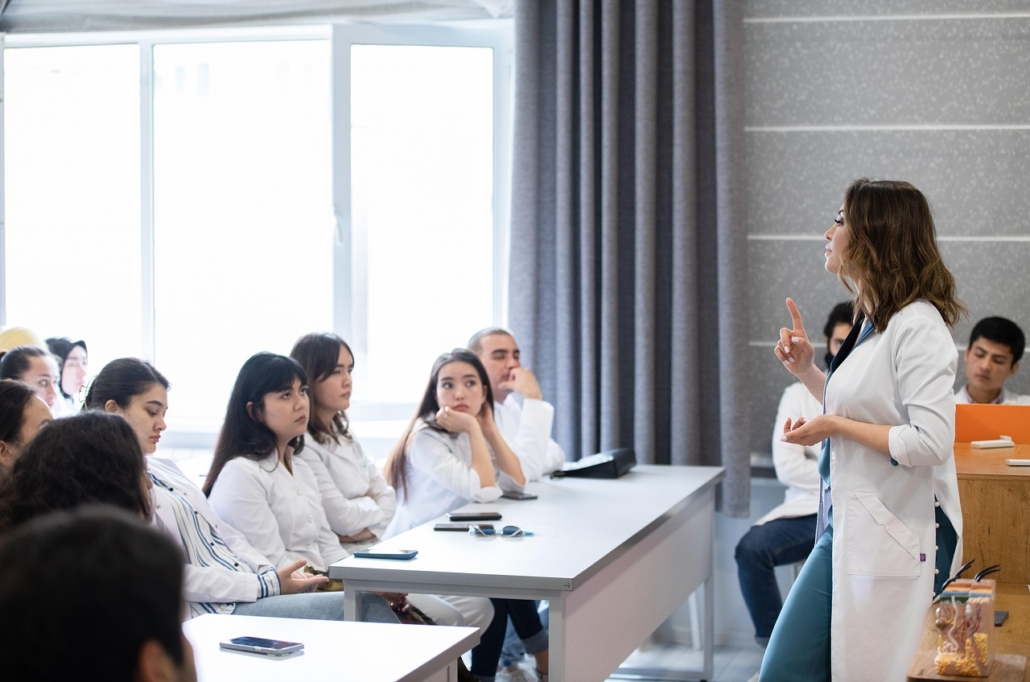Updates on SDG 3 in the Russian Federation


What Is Palliative Care?
Palliative care aims to alleviate suffering and improve quality of life among people with serious illnesses. According to the Osteosarcoma Institute, palliative care involves understanding the symptoms and pain that come with an illness and then, working in collaboration with a medical team to focus on comfort. Examples of palliative care include treatment for terminal cancer patients, Alzheimer’s patients, hospice care and pain management.
How Does Palliative Care Affect Poverty?
Access to health care is so crucial in the fight against global poverty, but why palliative care? As the Osteosarcoma Institute states, palliative care is providing care to those with serious and long-term illnesses. The long-term care necessary for these illnesses can get expensive very quickly, and without accessible palliative care, many can find themselves staring down the barrel of poverty. Palliative care also provides stability to people with these illnesses, which allows them to retain work. Essentially, poverty and palliative care share many connections. If somebody lacks access to long term services, they can quickly find themselves in poverty. Below the poverty line, health care access is even less accessible. Therefore, increasing access to palliative care is an effective method to reduce the number of those living in poverty.
The Center’s Mission and Objectives
Sechenov University organized The Federal Research and Practical Center for Palliative Medical Care in 2019 to develop the palliative medical care system in Russia. Specifically this institution aimed to bring better health care to Russian citizens. Article 36 of the Russian Constitution defines said health care as a social fundamental right. The Center itself focuses on the organizational side of the mission, by developing and implementing programs that will deliver this care to Russian citizens. By training medical personnel focused on palliative care, they are raising the quality of the health care industry across Russia. By bringing this program to Russia, they are ensuring more people have access to this long-term and expensive care. In doing so, they’re also reducing the presence of poverty.
Global Implications
The Federal Research and Practical Center for Palliative Medical Care, located in Sechenov University, is a center that is establishing a new standard for medical care in Russia. However, its implications reach much farther than that. The center has long partnered with prestigious medical institutions such as Harvard University, Johns Hopkins University and Oxford University. In doing so, they are fostering a new culture in the health care industry and creating a global exchange of research, expertise and medical knowledge. These partnerships develop systems that provide quality palliative care to those in need across the globe. As a result, this institution is strengthening the quality of medical care that Russian citizens have access to. Furthermore, it is cultivating globally competent palliative care and reducing the presence of poverty world-wide.
Challenges on the Path Forward
While major steps have been made toward SDG 3 in the Russian Federation, good health does not come easy. The path to improvement holds a number of challenges: lack of financing, shortfall of medical personnel and distribution of medical care. Specifically, in recent years, as the aggression between Ukraine and Russia deepens, the Russian Federation has prioritized military spending. This leaves the medical industry without the funds they need to progress. As a result of this, there is a blatant shortfall of medical personnel in numerous regions. For example, the Center for Eastern Studies notes that Altai Krai requires more than 1,500 physicians and 1,200 mid-level practitioners.
Moscow, the nation’s capital and largest city, is more fortunate with financial and medical resources. This makes it a hotspot for medical treatment in Russia. Moscow citizens reap the benefits of specialized hospitals, medical professionals and major investments into health care infrastructure. However, those outside the major city receive severely inferior treatment. To work toward the United Nations SDG 3 in the Russian Federation, policymakers must address the uneven distribution of these necessary resources.
A Step Toward Better Care
The World Health Organization’s recent designation of the center as a WHO Collaborating Centre for Training in Palliative Care marks an important step in pursuit of SDG 3 in the Russian Federation. It is a symbol of medical progress in Russia and across the world. Its mere existence fosters global exchange of information that improves the palliative care industry exponentially. By addressing their shortfalls in funding, staffing and infrastructure and redistributing materials more equitably across the nation, the Russian Federation will only continue to propel the medical industry to progress and reduce poverty globally. It is the hope of this center that one day it will not be an isolated example of progress. Instead, it will serve as the national standard for palliative care.
– Caroline May
Caroline is based in Denver, CO, USA and focuses on Good News and Technology for The Borgen Project.
Photo: Pixabay
